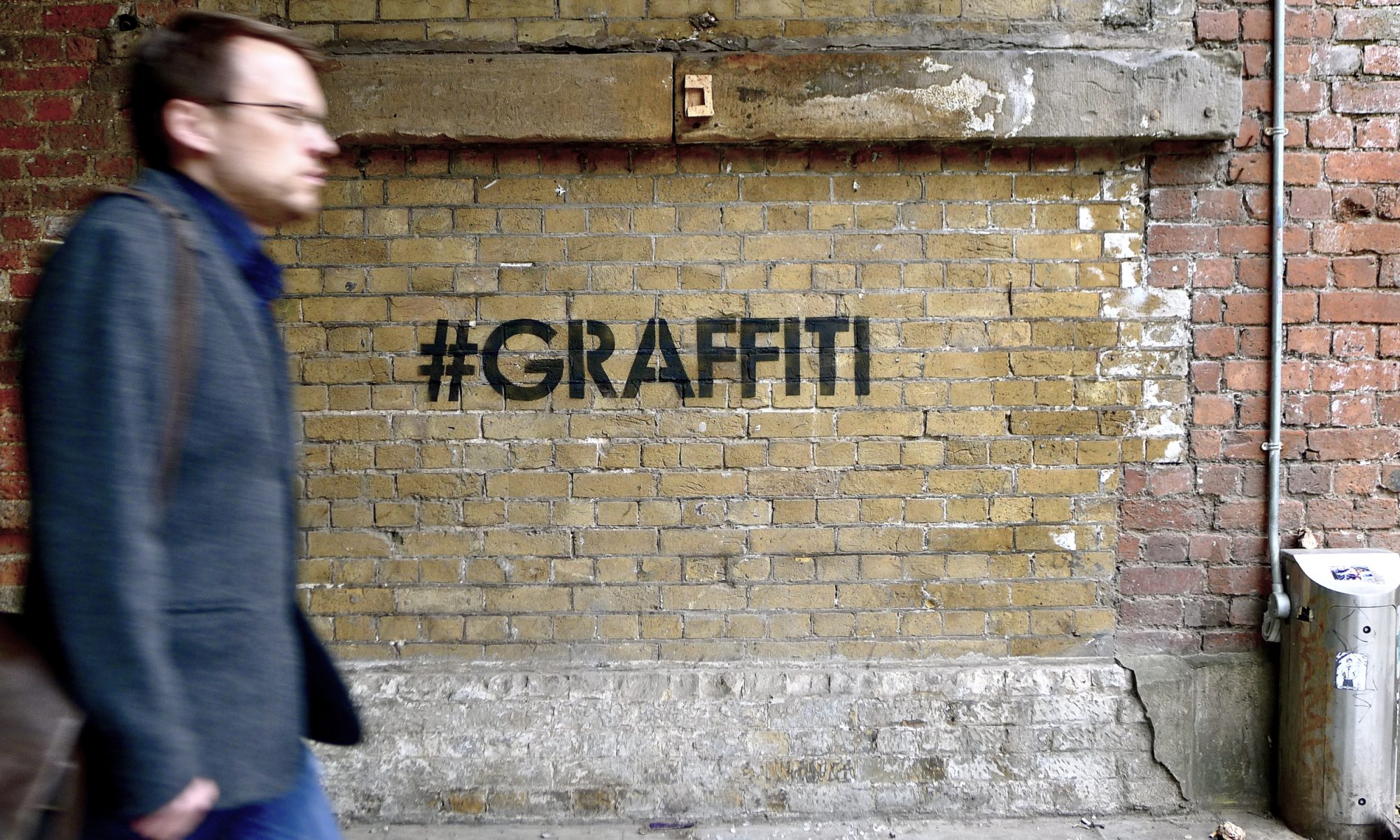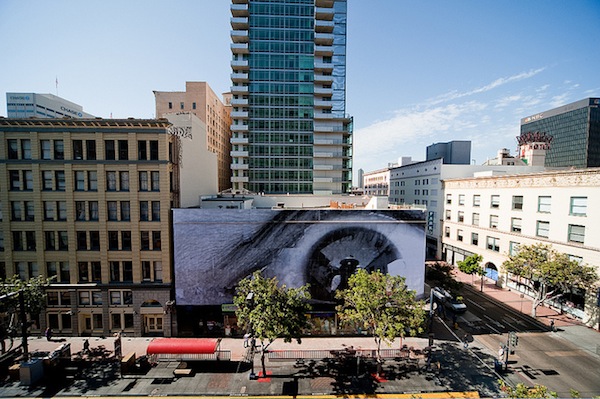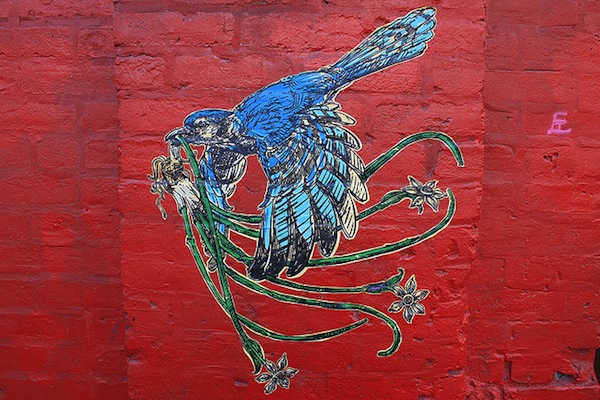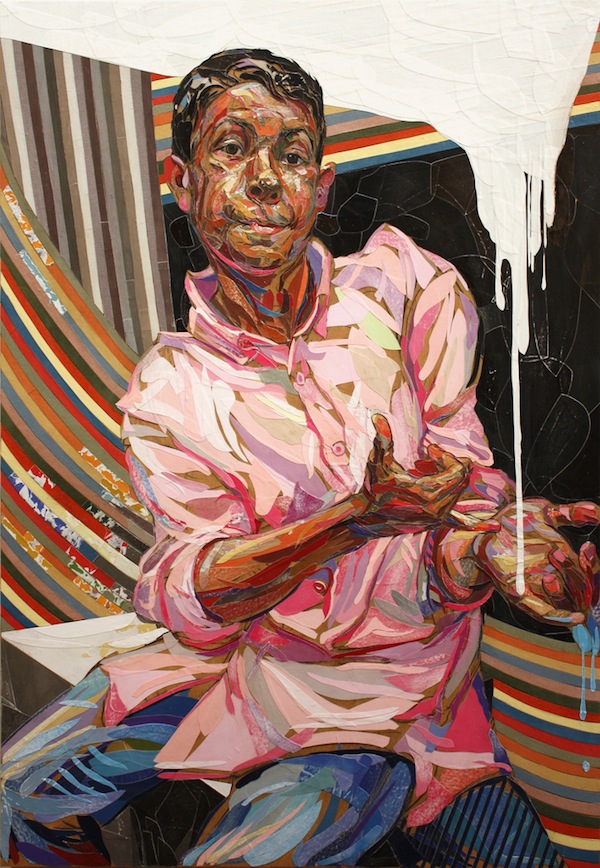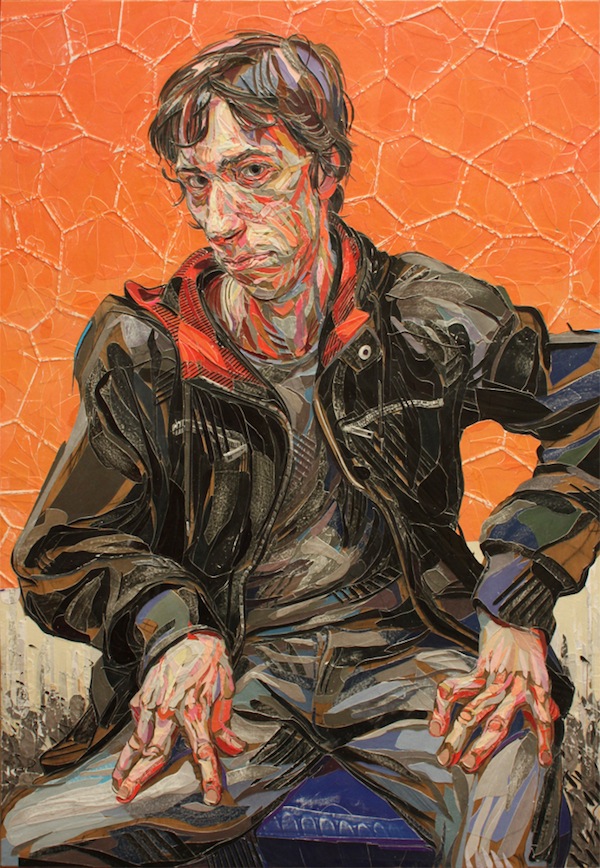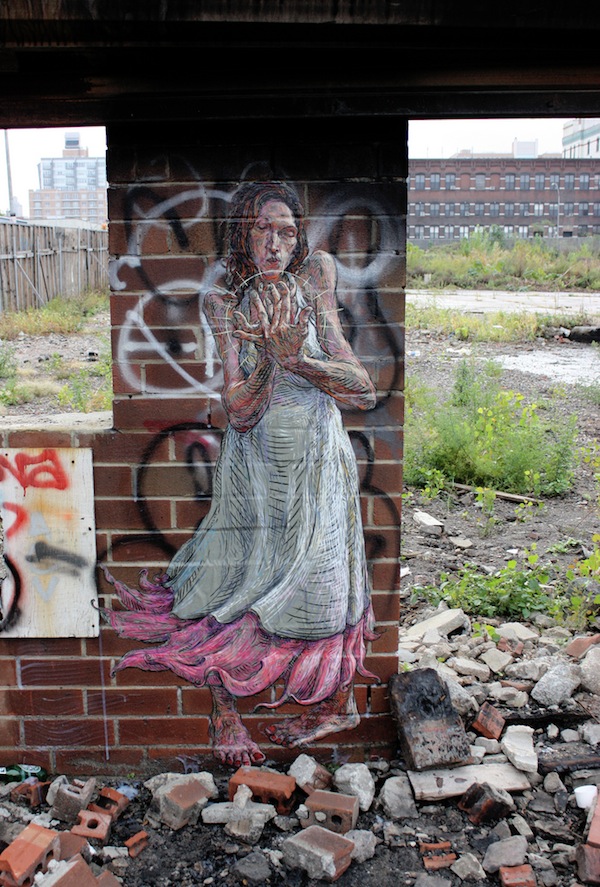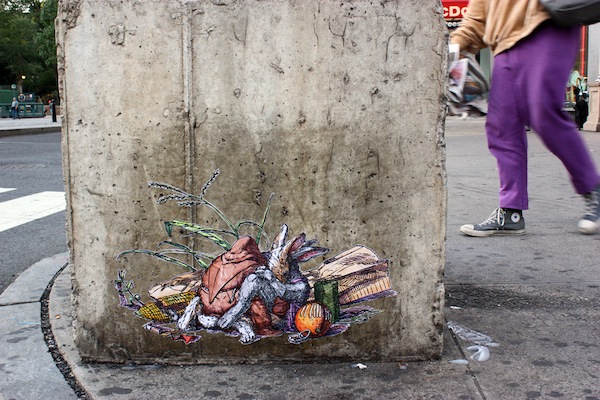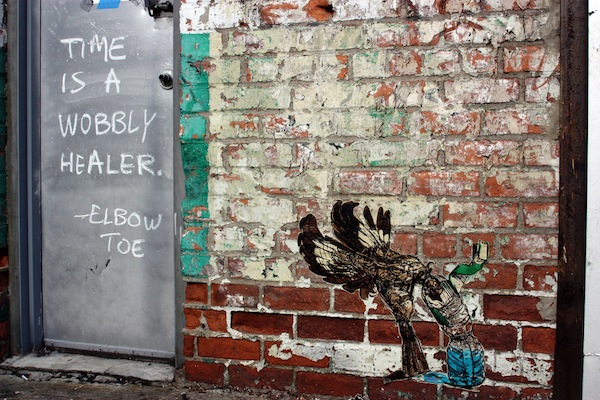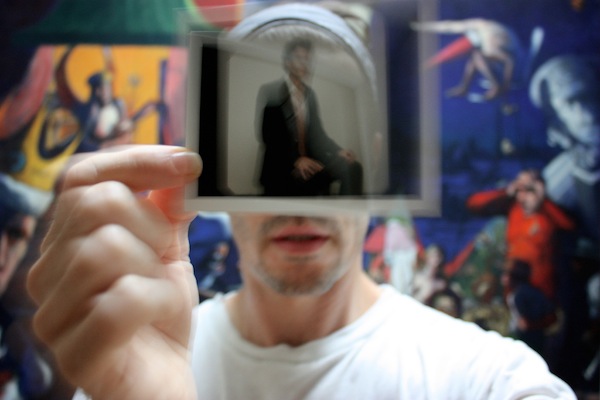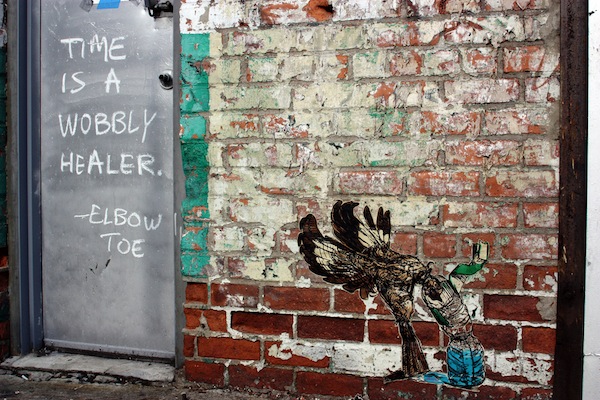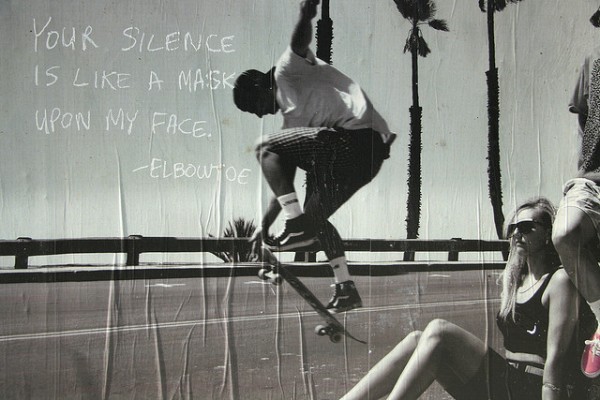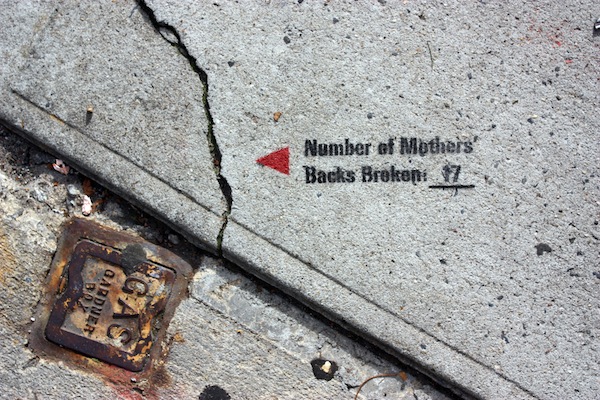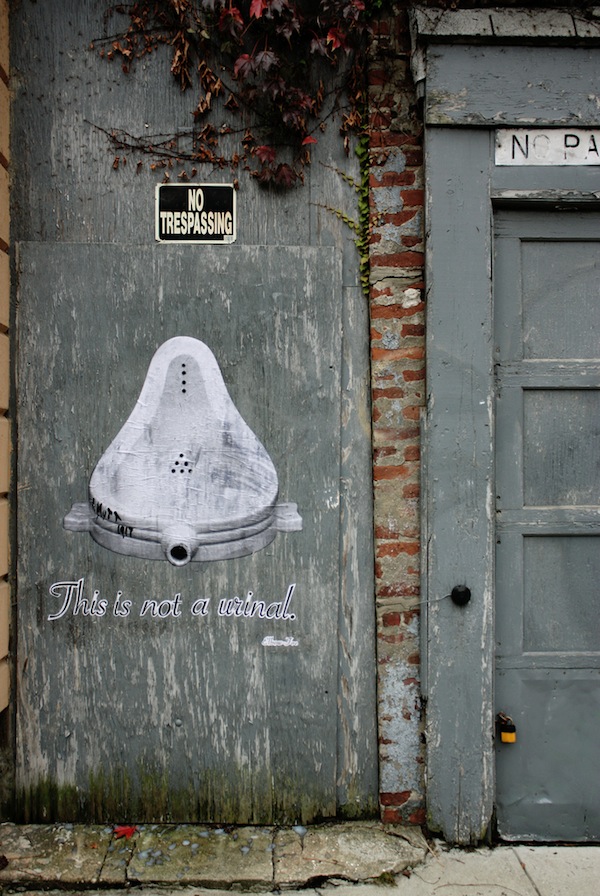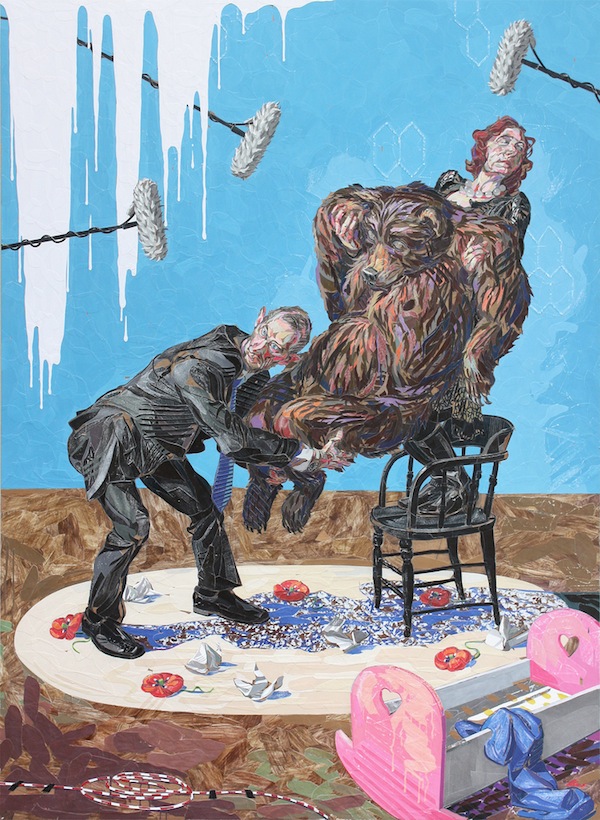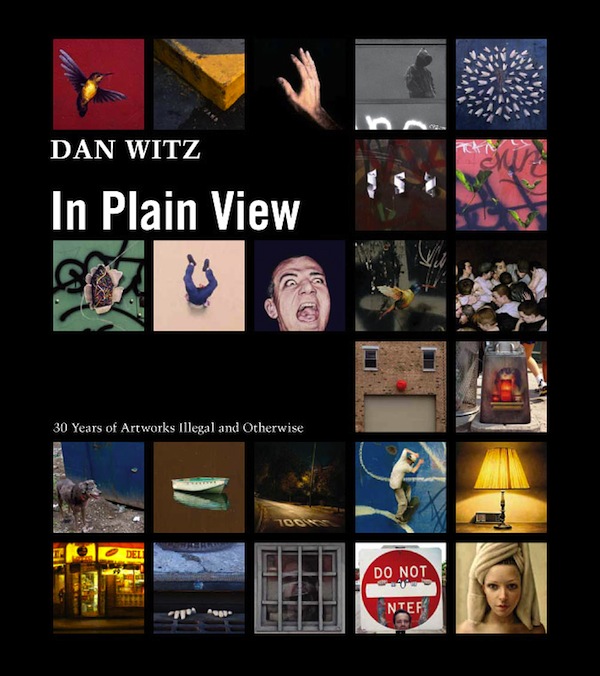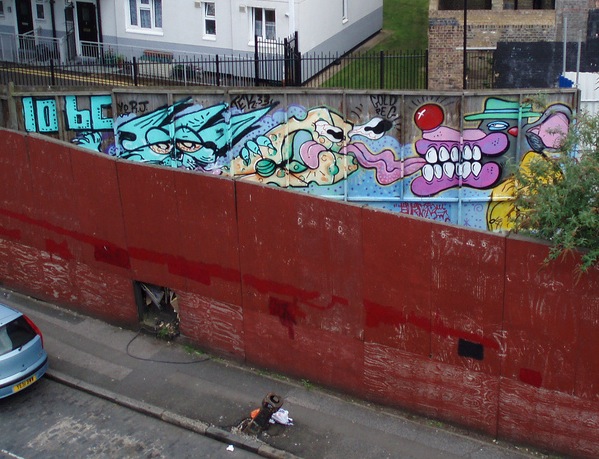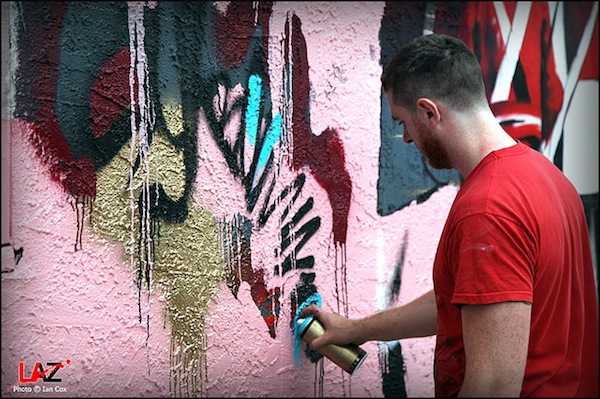
Hailing from Cork; the second largest city in Ireland – Conor Harrington’s work is what can only be described as a perfect marriage between both the elegance of fine art and the abrasive techniques of street art. Conor’s routes in urban culture may be hard to see amongst his many historical references to those involved in battle; often seen marching through explosions of colour and graffiti styled lettering in his work. Needless to say, every one of Conor’s pieces portrays a small part of the battle field in itself or more to the point a brilliant potent clash of styles. However Conor’s hard, dripping and typographically-inspired lines are a culmination of years of practice working his way through the graffiti scene world wide. Years later and now wanting to shake off any labels, Conor’s work has come to mature and evolve into what he likes to call “post-graffiti” – A style that showcases his finer practice yet still remembers its routes.
Conor recently took some type out to talk to us here at Vandalog. Check it out!
Can you remember a time when Art really started to influence what you wanted to do with your life?
Its hard to put an exact time on it really, but I think I’ve always wanted to be an artist. I don’t come from a creative background at all so there wasn’t exactly a pre-prepared path for me. When I was around 10 I wanted to be an architect. That sounds desperately pretentious but don’t worry I didn’t know what an architect was, I just loved drawing pictures of buildings. My uncles moved to Chicago in the early 70s and worked on the Sears Tower when it was being built. Ireland didn’t have any sky-scrapers, and still doesn’t so I was completely enthralled by these huge buildings. I’ve toyed with the idea of adding an architectural element to my paintings but I think there’s a strong structural influence in there already. But I think the big moment came in ’94 when I did my first graffiti piece. That was the time I first realized there was no other road for me, although I’m not sure what the 14 year-old Conor would think of my work now.
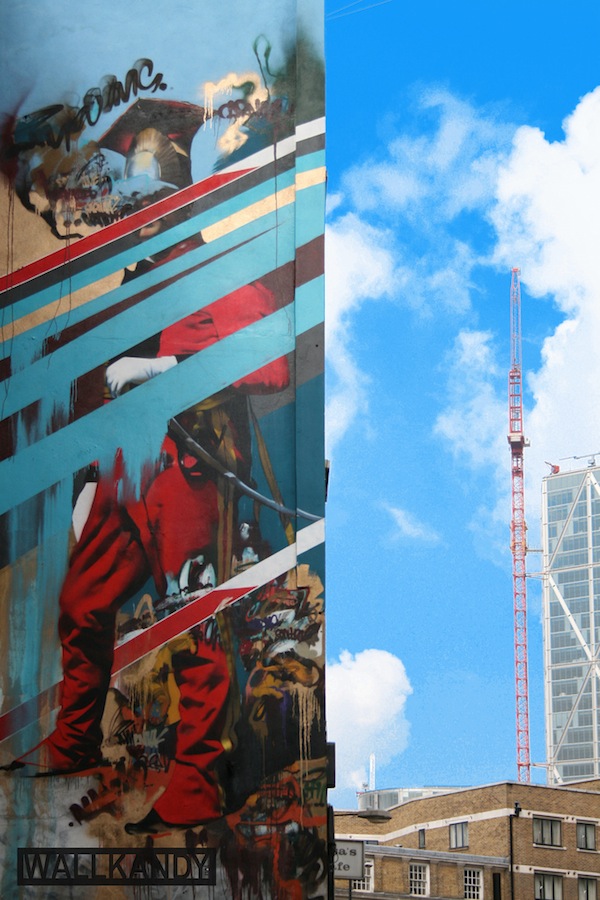
In a rather short space of time your artwork has managed to make a rather large impact on the urban art scene and has created a lot of interest and attention fairly rapidly around yourself. But of course this wasn’t always the case. How does it feel to have become such a well known name in the street art world and how do you deal with such an experience?
I don’t really see myself like that, there are a lot of big names on this scene and sometime I’m not sure how I fit in, my work is so torn between two worlds really. But the last few years have been good, especially since the recession funny enough. During the Street Art boom people just wanted something that looked like Banksy so a lot of artists benefited from that, but now thankfully things have matured. The street art scene has been a kind of fast-track to success for a lot of people. Some artists had day jobs as designers and within months of the boom they had sell out shows. I had been to art college for 4 years before all that so I think that shows a dedication to being an artist. I came out and had a number of shows before the world had even heard of street art so I think I’d still be doing it with or without the street art explosion. I’m glad the boom is over, I’m just knuckling down in my studio as always and trying to improve my work.
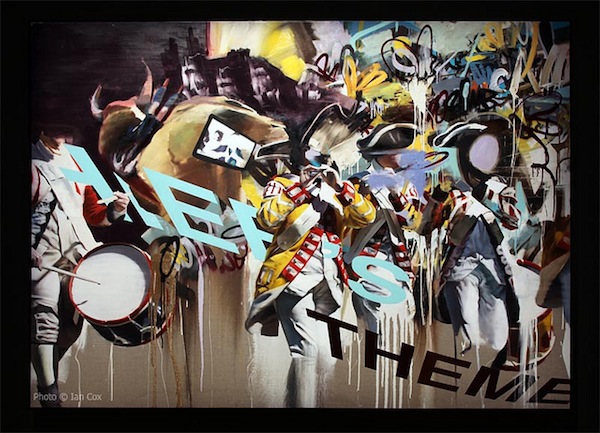
Starting out as a graffiti artist must have been pretty hard for you, especially as you began on a rather small to non existent scene back in your home town of Cork, Ireland. Although you’ve credited this experience for allowing you to learn and pick up your own technique freely, has it been some what of an overwhelming experience visiting the U.S and painting over there? It must be a dream come true in some respects.
I’ve been to the US a few times now but the first time was fairly special. It was in 2000 and I went to NY on a student visa to work for the summer. I painted at what was then called the Phun Phactory (now called 5Pointz) and I remember coming over on the 7 looking down on all the graf with Nas’ ‘NY State of Mind’ playing on my walkman (yip tapes, took me so long to let go of them). Classic New York moment for me.
Like many other artists who share a background in graffiti, you are also trying to shake off those labels and become recognized for the work you’re creating now as a painter. Obviously you’re still actively painting on walls and buildings, so do you think it will be harder to get rid of such a label when ultimately you’re still creating graffiti?
That’s a good point but I think people are thinking a little less about labels these days. Also the majority of my output is indoors, from the studio, and I operate under my real name as opposed to a tag so I don’t think I suffer under the label as much as others.
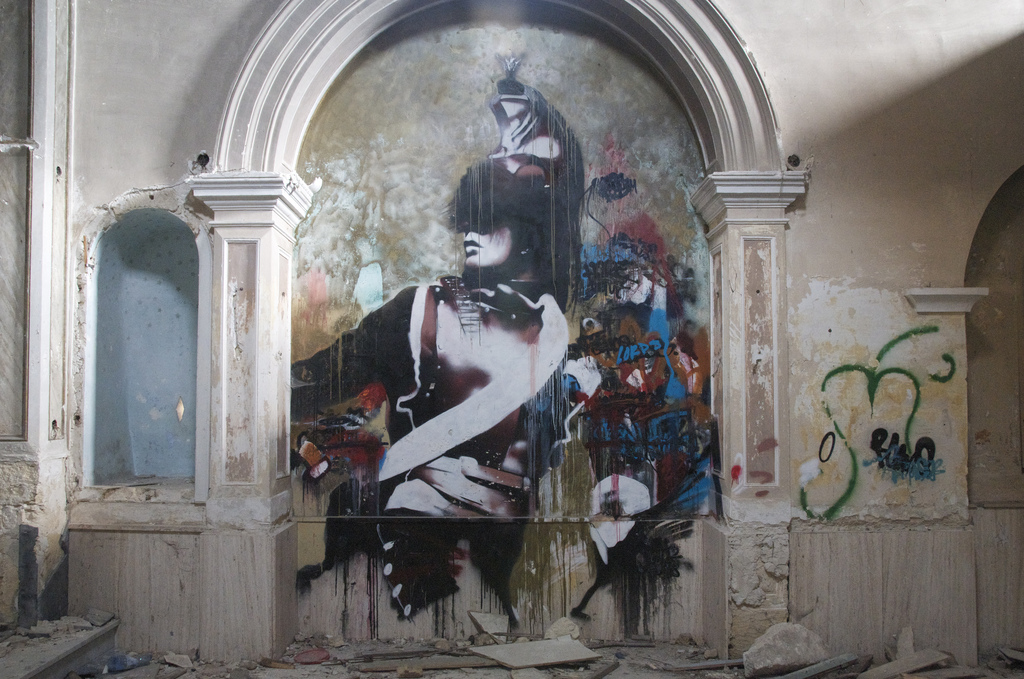
Your girlfriend (Chloe Early) is also a very successful painter. Both your work and that of hers often seem to have a similar lay out and style. Do you ever look to each other for artistic advice or inspiration?
Everyday. Her studio is a 1 minute walk from mine so we spend a lot of time in front of each others paintings. We both understand each others work more than anyone else so if I’m struggling with a painting she can walk in with fresh eyes and tell me exactly what I’m doing wrong.
All of your artwork seems to have this very intense and fluctuating energy about it. Would you say that this is same type of energy you hold as a person?
I have a lot of energy but I think I’m fairly shy and chilled. I have a quiet nature but I can’t stand being in quiet places, that’s why I love cities and loud music. I think I need to be in chaotic intense places to compensate for my own lack of loudness. Its possibly the same with my work, I put it all down on canvas. I also like my paintings to reflect the world we live in today, like a loud, cross-pollinated, re-mixed, information-overloaded mongrel.
How long did it take you to paint the work for your latest show, Euro Trash?
I worked on it since Christmas but the 4 large pieces took up 95% of the time.
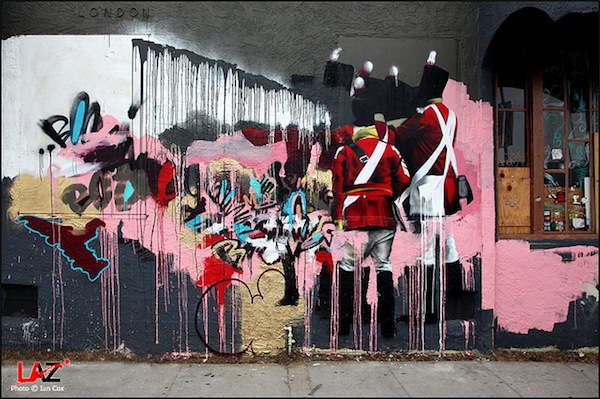
Were you a fan of Jr, Vhils and Antony Micallef’s work before the show came together?
Yip absolutely. JR and Vhils are making some of the most exciting and ambitious street art today and I’ve always thought of Antony as the strongest painter on the ‘urban’ scene, God I bet he hates that label, he’s so far beyond it.
What gives a you a bigger buzz – painting on walls or on canvas?
They’re very different things for me. My canvases take forever, I toil and toil over them, sweating, cursing, smiling (no crying yet) until I’m even slightly satisfied. My walls on the other hand are a lot quicker, although I do struggle with them more. If a painting isn’t working out I can put it away and work on something else. If a wall isn’t working out you can’t put it away so you have to work through these problems in a much shorter period of time and in public.
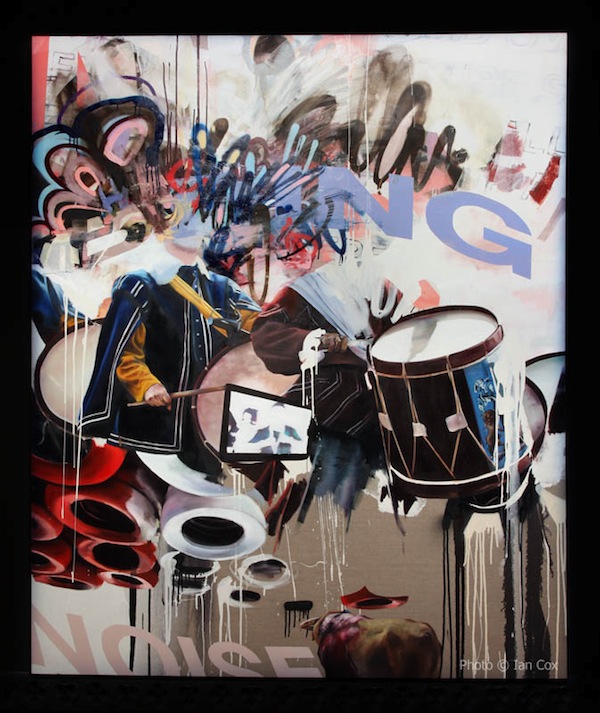
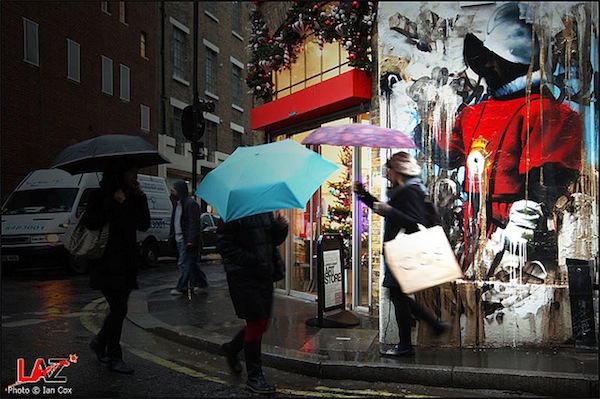
And finally, what’s next for Conor Harrington? In regards to your work, new projects and any other personal aspirations you have in life. Is there anyone you’d like to give a shout out to?
There’s a few exciting Laz shows coming up that I’m getting busy for and I have my solo show there in late 2011 that I need to start thinking about. I’m going out to Fame next week with Word 2 Mother, and Andy Telling will be doing a short film. Actually he still has to finish editing my Israel/Palestine trip so maybe I won’t let him on the plane. I’m looking forward to eating lots of ice-cream in Italy, don’t think I’ll paint at all, just eat. So I’d like to give a massive shout-out to all the Gelaterias in Grottaglie. I’m coming, get busy.
Be sure to check out more from Conor by visiting his website.
Photos by Wall Kandy/Ian Cox and Vandalog
